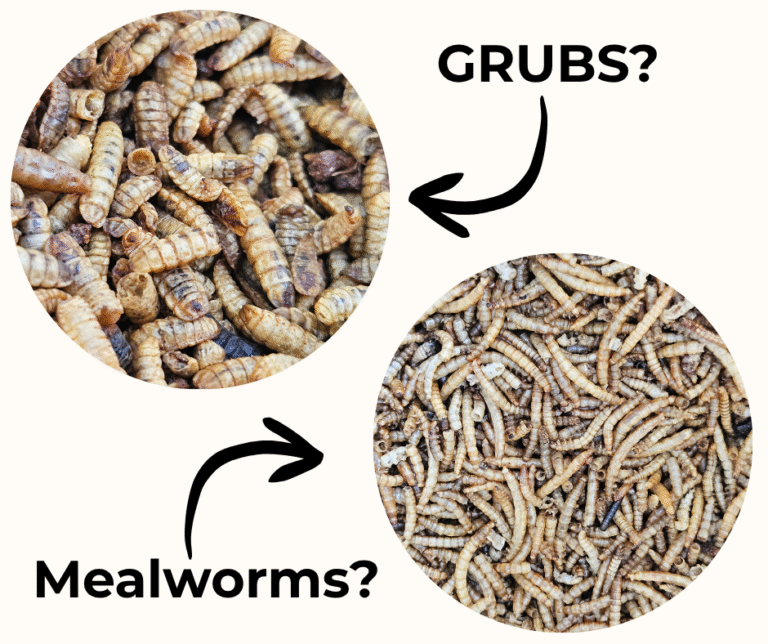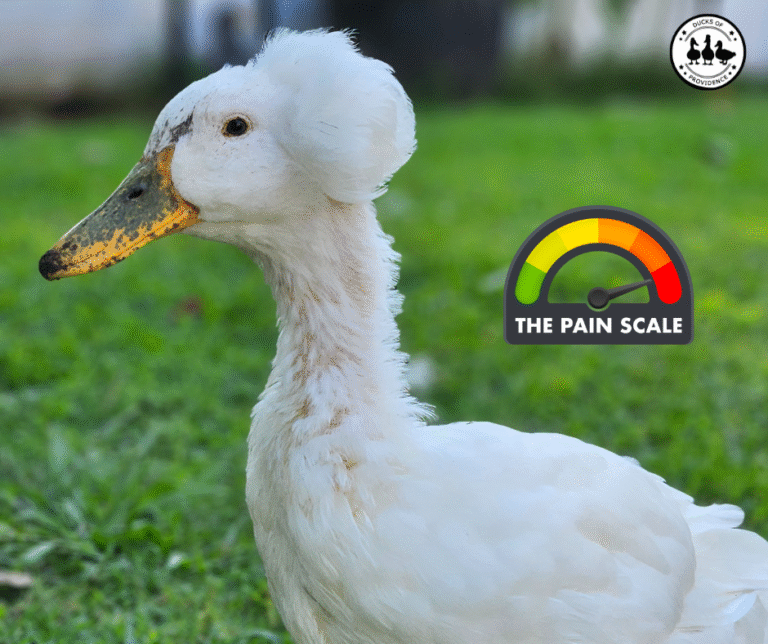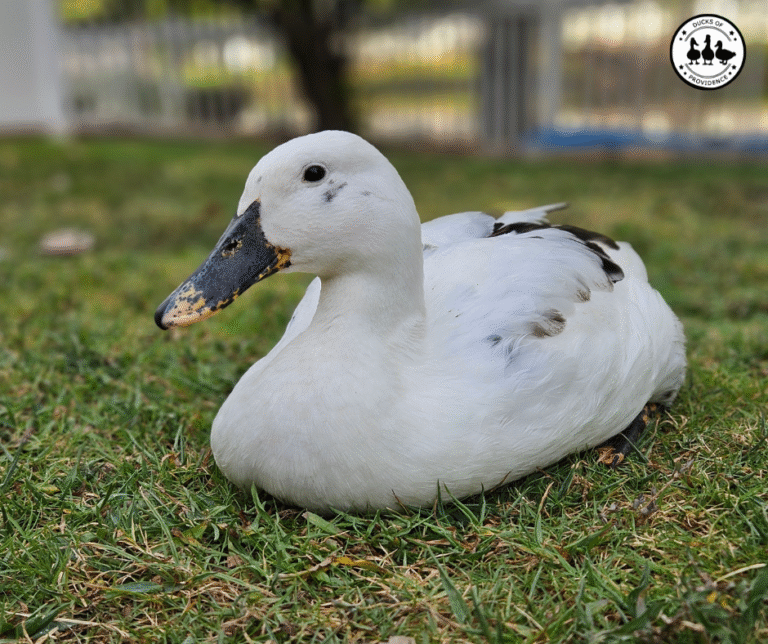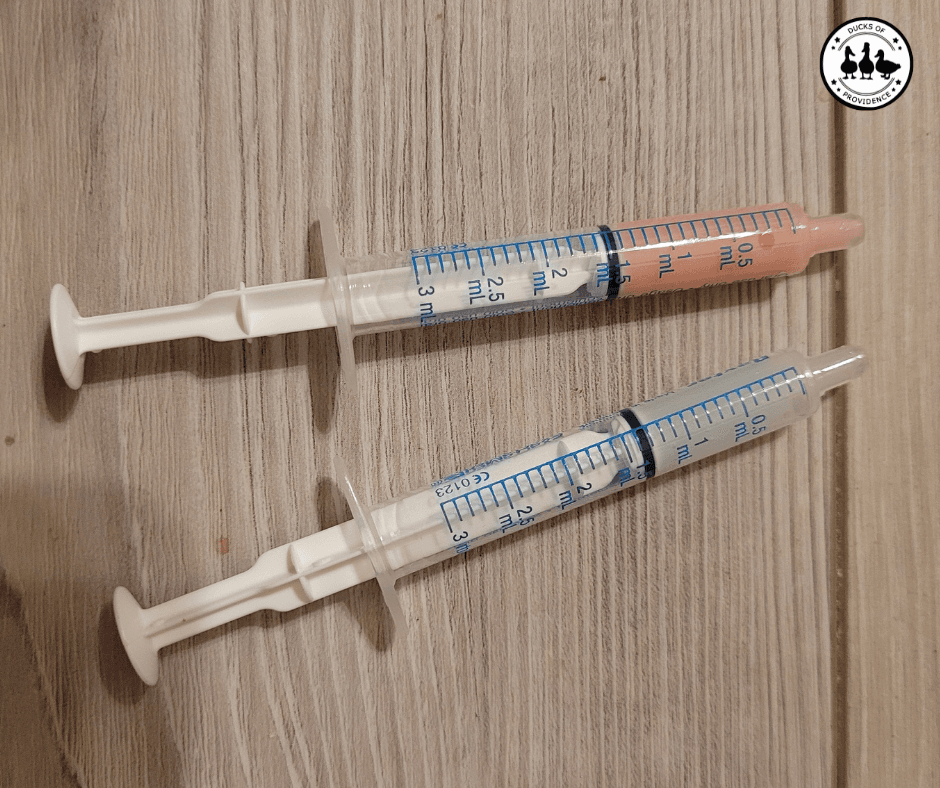
Safely Medicating Ducks: A Guide for Pet Duck Owners
If you’ve ever had to give medication to a duck, you know it’s not always a walk in the park. From suspicious side-eyes to full-blown flapping escapes, medicating ducks can be challenging—even for experienced duck parents. But with patience, the right tools, and a few proven techniques, you can successfully treat your feathered friend and make the process less stressful for both of you.
Over the years, I’ve cared for seven pet ducks with different personalities, health needs, and preferences when it comes to handling. From administering antibiotics to dealing with chronic conditions like Krümel’s zinc toxicity, I’ve learned that no two ducks are alike—but there are strategies that can work for most. This guide walks you through the essentials of medicating ducks at home, drawing from both veterinary guidance and personal experience. Whether it’s oral medication, topical treatment, or the occasional injection, this post has you covered.
Ducks of Providence is free, thanks to reader support! Ads and affiliate links help us cover costs—if you shop through our links, we may earn a small commission at no extra cost to you. Thanks for helping keep our content free and our ducks happy! 🦆 Learn more
Understanding the Medication
Before we talk about how to medicate ducks, it’s important to understand what you’re giving and why. Ducks, like all animals, respond best to medications prescribed specifically for their species and condition. Here’s what to keep in mind:
- Forms of Duck Medications:
- Liquid (most common for antibiotics, dewormers, pain meds)
- Pills or capsules
- Injectables (usually for more serious conditions)
- Topical ointments and sprays
- Eye or ear drops
- Stick to Vet Prescriptions: Always consult an avian or waterfowl-savvy vet. Never give medications meant for humans or other animals unless explicitly instructed—many are toxic to birds.
- Follow Dosing Instructions Closely: Underdosing can make an illness harder to treat, while overdosing can be dangerous. Your vet will calculate the dosage based on weight and severity of illness.
- Ask Before Mixing: Some medications should not be crushed or mixed with food or water because they lose effectiveness or become harmful when altered. Always ask your vet what’s safe.
- Storage and Expiration: Some meds need refrigeration, while others must be kept dry and dark. Check expiration dates regularly.
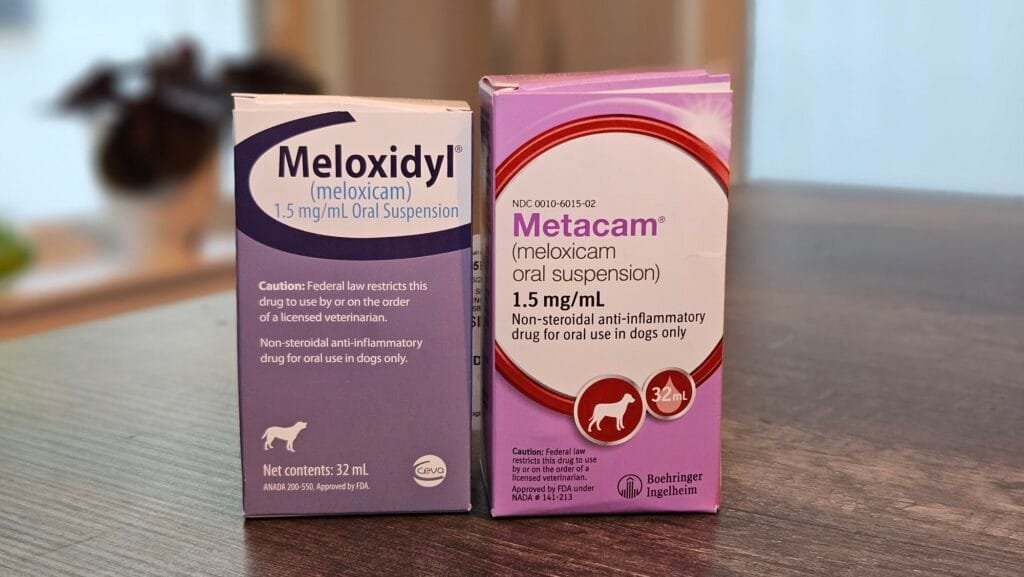
Oral Medication: Liquid and Pills
Before You Begin: Safely Restraining Your Duck
Administering medication starts with safe and secure restraint—not just for you, but for your duck. The goal is to minimize stress while ensuring the duck can’t wiggle free and hurt itself (or you).
Here are several restraint methods we’ve used successfully, depending on the duck’s size, temperament, and the situation:
1. The Towel Burrito
- A classic method where you wrap the duck in a towel, securing their wings and legs while leaving the head exposed.
- Ideal for smaller ducks, or for procedures that require holding still for more than a few seconds (like giving eye drops or tube feeding).
- Tip: Use a medium-thick towel and fold it snugly under their body and over their wings.
2. Between Your Legs – Upright Position
- Sit or kneel on the ground and place the duck between your thighs, facing forward.
- Gently close your thighs around their body—enough to prevent escape, but not so tight that they panic.
- This keeps your hands free and is useful for quick syringe use or for feeding pills.
3. Over-the-Top Hold (Sitting Position)
- Sit cross-legged and place the duck in your lap, facing away from you.
- Use your legs to gently press their sides or even cross your ankles in front of them, creating a secure triangle.
- Use one hand to support under the chest or to stabilize the head if needed.
4. Kneeling with Support
- For larger or squirmier ducks, kneel over them and cradle their body between your legs.
- This is often used when administering tube feedings or injections under the skin (more on that later).
Each duck has its own comfort level, so it may take a few tries to find what works best. And don’t forget to speak calmly and offer a treat afterward—ducks are quick learners and positive reinforcement really helps make future treatments easier.
Now that your duck is safely restrained, let’s walk through how to administer liquid medication.
Liquid Medication
Oral liquid medication is the most commonly prescribed form for pet ducks, especially for antibiotics, pain relief, or anti-inflammatory drugs. While it’s often easier to dose than pills, it does come with a serious risk if administered incorrectly: aspiration.
🦆 Important Safety Note: Avoid the Trachea!
When giving liquid medication, you must take care not to squirt it directly into the duck’s windpipe (trachea). If the medication enters the trachea instead of the esophagus, your duck can aspirate, which can lead to aspiration pneumonia—a potentially life-threatening condition.
Here’s what you need to know about duck anatomy:
- The glottis (the opening to the trachea) is located at the base of the tongue, in the center.
- The esophagus, where food and liquid should go, is positioned slightly to the right side of the duck’s neck.
When medicating:
- Secure your duck with your preferred method as mentioned above to limit movement.
- Use a small oral syringe, and approach from the side of the beak, not the front.
- Aim slightly toward the right side of the duck’s throat.
- Squirt the liquid slowly and steadily, giving the duck time to swallow.
- Always follow with a favorite treat—this reinforces positive behavior and helps the duck recover from the stress.
If your duck is a squirmer or extremely difficult to medicate (as we’ve experienced with Krümel), you might consider using a tube feeding syringe.
✔️ Tube Feeding Syringe for Safer Administration
This method sounds more advanced, but it’s incredibly helpful if you’re trained—or if your vet has shown you how.
- The feeding tube is inserted gently into the esophagus and pushed down into the crop, bypassing the glottis entirely.
- This method eliminates the risk of aspiration because the medication never comes close to the trachea.
- It’s especially helpful for ducks that refuse to swallow, are very ill, or have to take medication for extended periods.
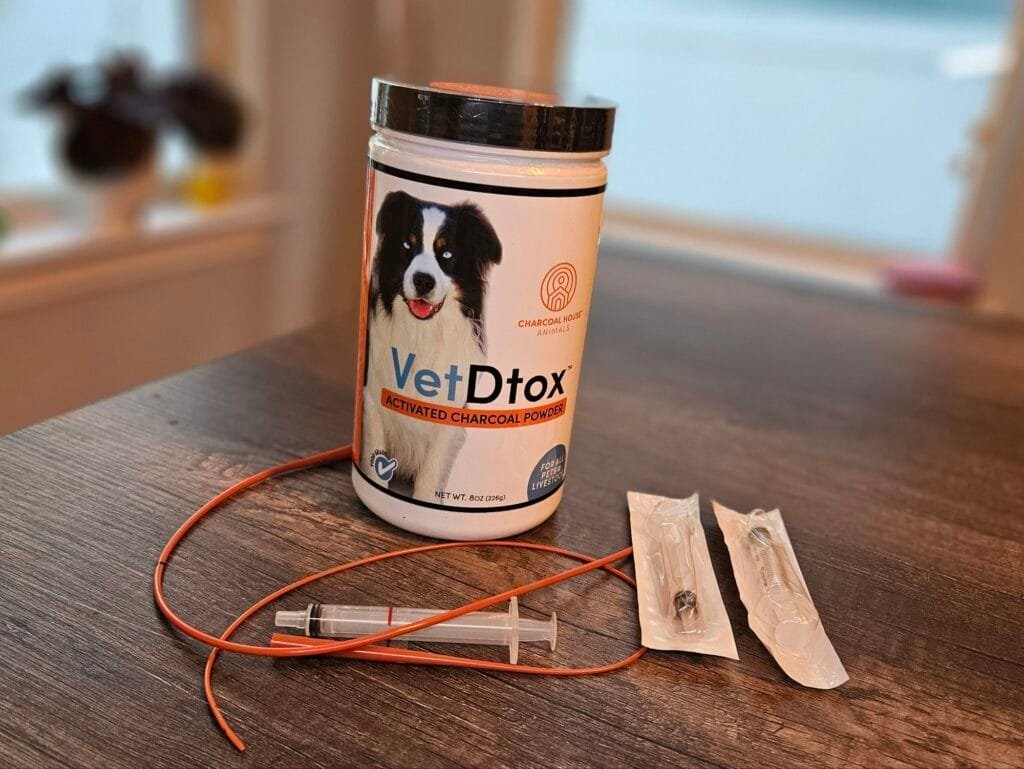
We’ve used this method successfully with Krümel, who sometimes refuses to cooperate with a syringe. Once you get the hang of it, it’s actually easier and safer than forcing liquids near the mouth.
💡 Tip: If you’re interested in this method, ask your vet to demonstrate and guide you through the process before trying it at home.
Pills and Capsules
Giving pills to ducks is a bit more challenging than liquids—but definitely possible with a little practice and creativity.
Here are the best approaches:
1. Hide the Pill in a Favorite Treat
- Soft fruits like tomato, melon, or grape, or blueberry can be cut and wrapped around a pill.
- You can also use scrambled egg or a small spoonful of mashed peas.
- This method works best if the duck is food-motivated and you’re dealing with smaller pills.
2. Crush and Mix (Only If Approved by a Vet)
- Some pills can be crushed and added to a small portion of food.
- Ask your vet first—some medications lose effectiveness or become unsafe when altered.
- Mix into moistened pellets, plain oatmeal, or duck-approved treats.
3. Direct Delivery (with or without a Pill Popper)
- If your duck won’t accept hidden medication, you may need to administer the pill directly.
- Wrap the duck in a towel, hold the beak open, and place the pill as far back in the throat as possible, ideally past the base of the tongue.
- Use a pill popper tool if needed to help guide it down.
- Follow with a small syringe of water to help it go down smoothly.
Just like with liquids, the goal is to bypass the glottis and ensure the pill reaches the esophagus. If done correctly, your duck will swallow it without risk of aspiration.
Injectables (Usually for More Serious Conditions)
Injections are sometimes necessary for treating serious infections, administering pain medication, or delivering vitamins directly into a duck’s system. While injections can be life-saving, they are not something you should attempt without proper veterinary instruction.
Types of Injections:
- Subcutaneous (Sub-Q): Injected just under the skin, usually between the shoulders or along the side of the breast.
- Intramuscular (IM): Injected deeper into the breast muscle.
Critical Warning:
🛑 Ducks have a very different internal anatomy compared to mammals.
Their respiratory system includes large air sacs located just under the skin and around the organs.
If an injection is given incorrectly, you can accidentally puncture an air sac, which can lead to serious respiratory complications or infections.
Because of this risk, you should never attempt to inject a duck unless:
- A qualified avian or waterfowl veterinarian has shown you the proper technique.
- You feel completely confident about the injection site, depth, and angle.
- You use sterile, fresh equipment every time.
If you are unsure—even a little—it’s far safer to bring your duck to the vet for injections.
General Principles for Safe Injections:
- Use only the needle and syringe size recommended by your vet.
- Always draw up the exact prescribed dose.
- Tap out air bubbles before injecting.
- For Sub-Q injections, gently pinch the skin to create a “tent” and insert the needle into the tent’s base.
- For IM injections, insert the needle into the thickest part of the breast muscle, avoiding the keel bone (breastbone).
Restraint Tips:
- Towel-wrapping or gently kneeling over the duck can help stabilize them.
- A second person to hold the duck steady is ideal—especially for first-time injections.
Final Note:
If you notice swelling, bruising, or labored breathing after an injection, contact your vet immediately. These can be signs of air sac damage or improper injection technique.
Eye and Ear Drops
Ducks can develop eye infections, ear abscesses, or sinus issues that require medicated drops.
Steps for Administering Eye or Ear Drops:
Eye Drops:
- Gently restrain your duck (towel burrito or between your knees works well).
- Support the head with one hand and use the other to carefully open the eyelids if needed.
- Drop the prescribed amount into the eye, aiming toward the center.
- Let your duck blink naturally to distribute the medication.
💡 Tip: Ducks have a third eyelid (nictitating membrane) that sweeps across the eye—don’t worry if you see it moving.
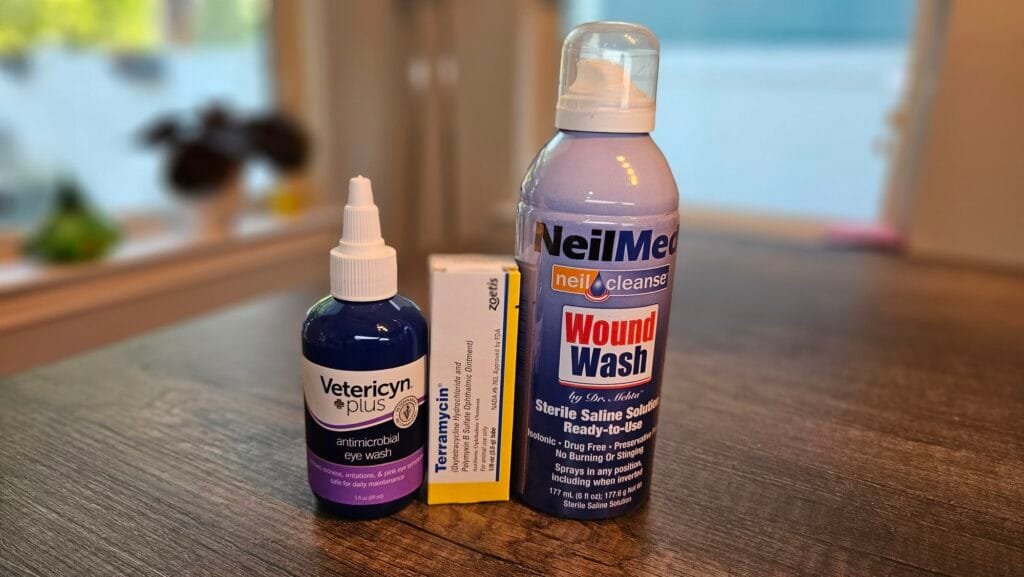
Ear Drops:
- Locate the ear opening—it’s behind and slightly below the eye, usually hidden under feathers.
- Part the feathers gently to expose the ear canal.
- Apply the prescribed number of drops.
- Massage the area lightly if instructed by your vet to help the medication settle.
⚠️ Caution: Be gentle. The ear canal in ducks is delicate, and excessive pressure can cause discomfort or injury.
Essential Tips for Medicating Ducks: Quick Recap
Medicating ducks can seem intimidating at first, but with the right knowledge, tools, and a calm approach, it becomes a manageable part of responsible duck care. Whether you’re giving oral liquids, administering pills, applying topical treatments, or even handling injections, it’s important to understand both how and why you are medicating.
Key points to remember:
- Always follow your veterinarian’s instructions carefully, including dosage, method, and medication storage.
- Understanding your duck’s anatomy—especially the location of the glottis and esophagus—helps prevent serious complications like aspiration.
- Restraining your duck properly, whether with a towel wrap, between your knees, or in your lap, is critical to avoid injury and ensure the medication is delivered safely.
- Never attempt injections unless you have been specifically trained by a veterinarian. Ducks have delicate air sacs that can easily be damaged if injections are done improperly.
- Use positive reinforcement whenever possible. A small treat, a gentle voice, and patience can go a long way in making the process less stressful for both you and your duck.
Every duck is unique. Some will accept medication easily, while others will require creative approaches and extra persistence. That’s perfectly normal. The most important thing is your commitment to their health and well-being.
With practice, medicating your duck will become less stressful and more routine. And in the end, the trust and bond you build with your feathered friend will be stronger than ever.

